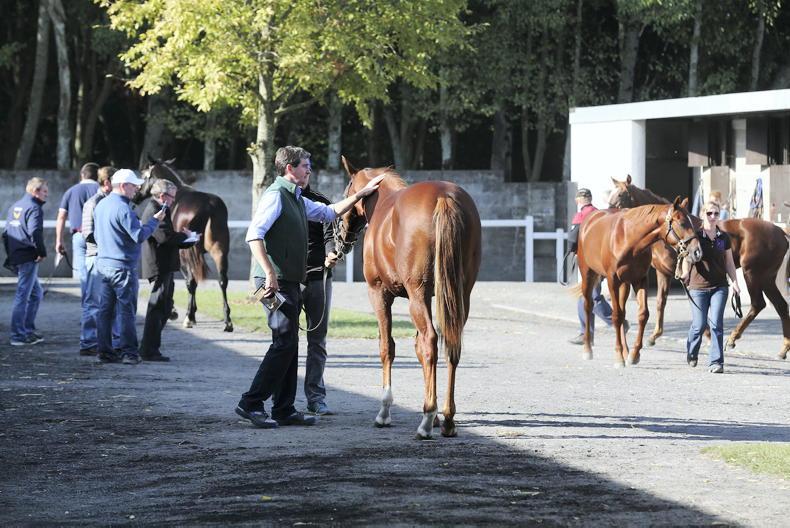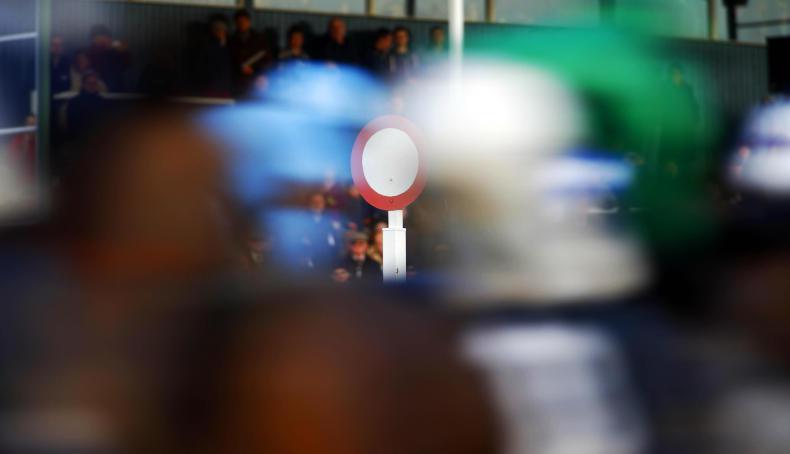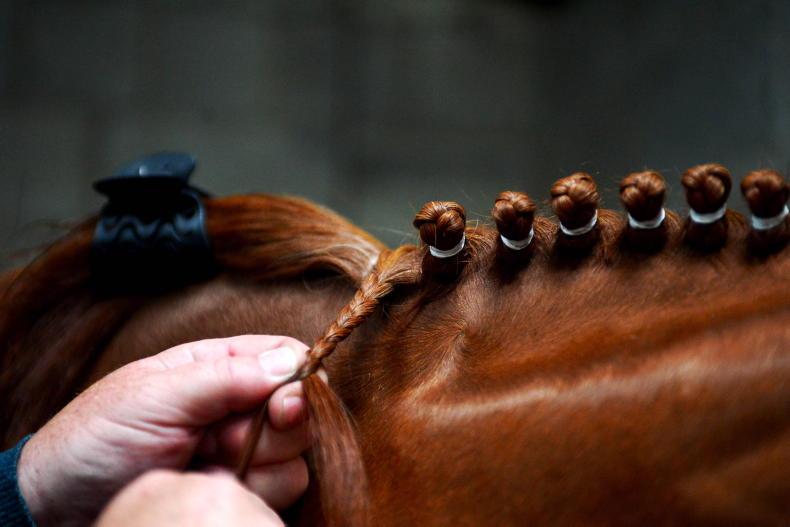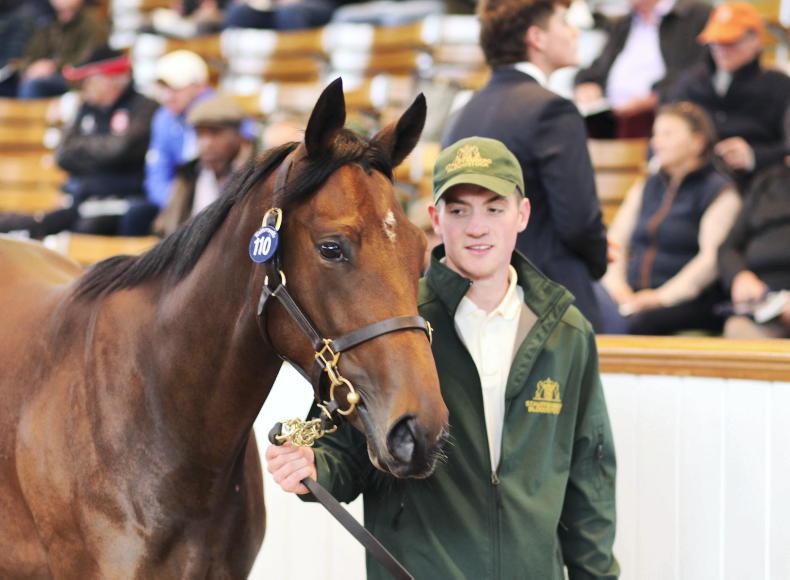THE sales ring is a place for breeders’ to shine and with luck receive economic reward for their hard graft and nurturing. Correct physical and psychological preparation of youngstock is vital if they are to step out on sales day to paint a portrait of the racehorse they will become and in turn catch the bidders’ eye and shake his pocket.
Irish National Stud
Emma Hannon from the Irish National Stud outlines their particular routine for yearlings: “The aim of yearling sales preparation is to produce an athletic, well-mannered, sound individual that will shine in the sales ring. Nutrition and exercise play an important role in preparing yearlings for the sales and a typical day for a yearling in sales preparation at the Irish National Stud consists of morning feed at 6:30 am, followed by exercise on the walker and in the lunge ring, during which time their boxes are mucked out, and fresh hay and water is provided for them.
“After lunch, all yearlings are groomed and get their feet picked out to ensure they look their best when the sales come around. All yearlings are then given their evening feed and, if required, another feed at night.”
Skeletal development
The first year or two of a horse’s life are a time of significant change and development within his musculoskeletal system. Researchers have shown that growing muscles adapt to the discipline for which the horse is preparing. So, developing equine muscles properly via race-bespoke exercise is fundamental in preparing the young athlete. Contrary to what many believe, researchers recognise that the early preparation of yearlings offers the chance to instil a solid foundation for future performance.
Professor of Equine Orthopaedics at the Royal Veterinary College, Roger Smith, explains: “People worry about exercising youngsters and are afraid it could be damaging. Different tissues respond at different times. Tendons tend to be responsive early on in life, joints and bones a little bit later. Certainly, we know that bones are especially responsive when horses start training as yearlings and two-year-olds.”
If youngsters are prepared sensibly, their musculoskeletal systems can be protected as they transition into a career on track. Most studs will maintain ongoing individual monitoring of the yearlings during training: this includes weighing them weekly.
Fillies tend to mature quicker than colts, and sometimes it is a question of keeping some condition off rather than putting it on. Yearlings should have rib cover but not be fat and have nice clean lines showcasing their athleticism. Doing too much too soon can lead to bone development issues, lameness or aesthetic imbalances, and so all exercise must be increased gradually and adjusted according to each individual animal’s progress.
Almost all yearlings will experience a growth spurt during sales preparation, so handlers must allow the yearling to rest for a few days. Backing off can make all the difference between a yearling on top form and displaying the signs of pressure or pain on sales day.
Louisa Carberry on overall impression
Champion trainer Louisa Carberry divulges what she looks for and what she avoids in a good yearling as it enters the ring: “In any horse, I guess the thing to look for is athleticism, a good outlook and a horse that moves easily, lightly on his feet and looks like a racehorse. I realise that’s really general, but I feel that it’s so much to do with the overall impression with jumpers! I don’t tend to forgive curbs or back at the knee or very light of bone. Often small blemishes other than these can be forgiven unless they are very bad.”
Strengthening
Swimming yearlings can be a particularly effective method of conditioning. Swimming not only helps develop muscle gently, but for yearlings having a growth spurt with aching knees or epiphysitis (a developmental orthopaedic disease most common in heavy, fast-growing foals), swimming provides low-impact strengthening with less concussion. Traditional hand-walking is still the most vital tool for sales preparation. Not only does it teach the yearling manners on the ground, but it also develops a confident, powerful strut that can add thousands to a bid. Alongside lunging a couple of times a week, hand-walking is usually utilised at least five times per week.
Hand-walking begins for 10-minute sessions and gradually builds up to 45 minutes to an hour. After yearlings have let off some steam walking, the practice parades are generally built into the daily hand-walking regime to ensure the yearlings become familiar with the sales drill and any stresses that come with it. A confident yearling is an attractive yearling.


 This is a subscriber-only article
This is a subscriber-only article
 It looks like you're browsing in private mode
It looks like you're browsing in private mode












SHARING OPTIONS: